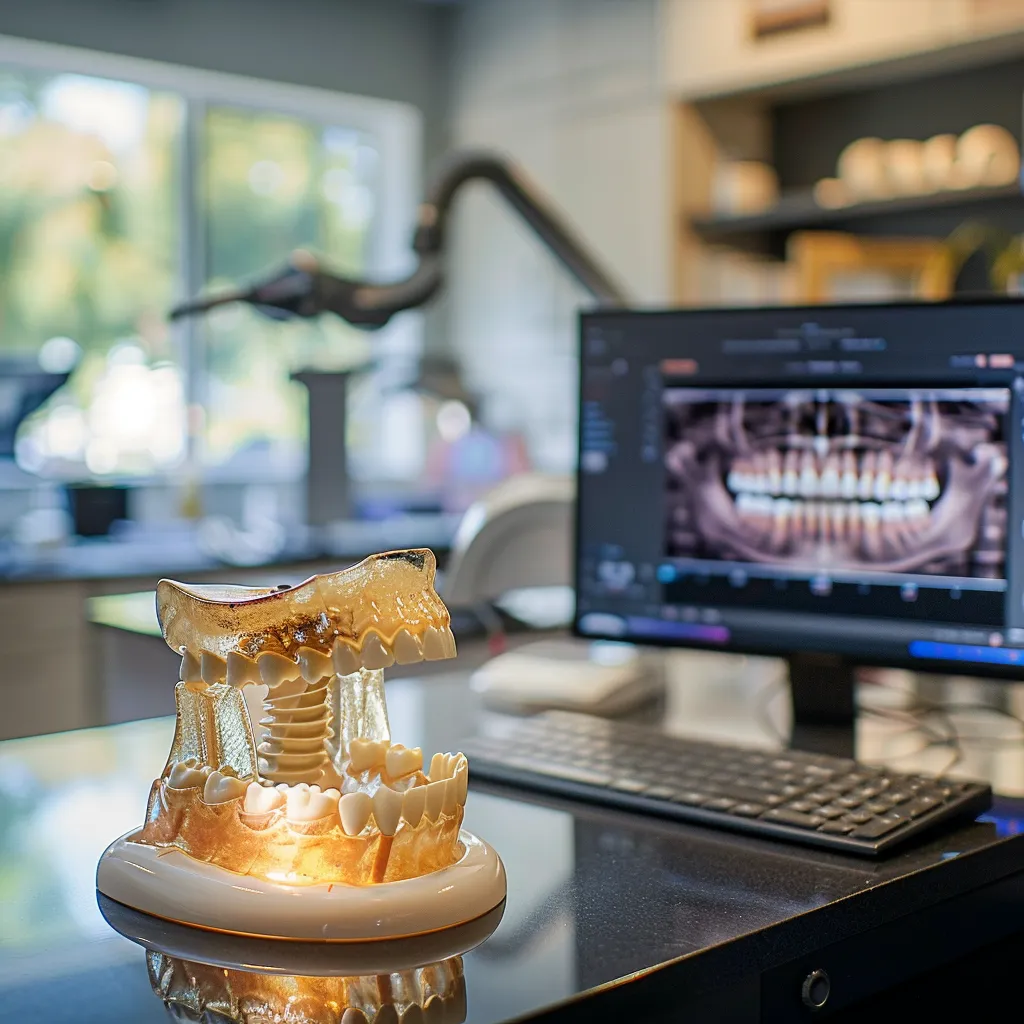“Dental implants have a 95% success rate—but that remaining 5% still matters.”
At Laguna Heights Dental, we know dental implants are one of the most effective and reliable ways to replace missing teeth. But as with any procedure, there’s a small chance things won’t go perfectly. That doesn’t mean you should worry—it just means you should know what to look for and how to take care of your implant.
Most implant failures are rare and preventable. And even if something does go wrong, it’s often treatable. Let’s take a closer look at what causes dental implant failure, what symptoms to watch for, and what you can do to keep your implant strong and stable.
What Is Dental Implant Failure?
Dental implant failure happens when the implant doesn’t bond correctly with the bone or becomes unstable after placement. This failure could also result from infection, poor healing, or changes in your jaw over time. While some failures happen shortly after surgery, others can develop years later.
We usually describe failure as either early or late. Early failure tends to occur within the first few months of placement. Late failure may happen years after the implant has integrated, typically due to bone loss or infection. Either way, the key is to catch problems early and treat them before they get worse.
Early Dental Implant Failure: What to Know
The first few months after your procedure are critical. This is when your implant is bonding to your jawbone through a process called osseointegration. If something interferes with that bonding, the implant might become loose or uncomfortable.
Some of the most common causes of early implant failure include poor bone quality, infection at the implant site, and too much pressure on the implant before it has fully healed. Health conditions like diabetes and habits like smoking can also interfere with healing and raise the risk of failure.
If you experience ongoing pain, swelling that doesn’t go away, or feel movement in your implant, call us right away. These are red flags that we want to address quickly.
Late Dental Implant Failure: It Can Happen Years Later
Sometimes, implants that worked perfectly for years start to fail. This can happen due to changes in your health, jawbone, or habits. One of the most common causes of late failure is peri-implantitis, a type of inflammation similar to gum disease that develops around the implant.
Peri-implantitis starts with irritation and bleeding, then progresses to bone loss if not treated. Grinding or clenching your teeth (also known as bruxism) can also put too much stress on the implant and surrounding bone. Even minor trauma—like a hard hit to the jaw—can compromise the implant’s stability.
If your bite feels different, your gums become sore or swollen, or you notice discomfort when chewing, don’t wait. Early treatment can often save the implant.
Warning Signs of Implant Trouble
How do you know when something isn’t right? Most patients notice subtle changes before the issue becomes serious. Pain when biting or chewing is one of the first symptoms. You may also feel that the implant crown or bridge feels looser than usual.
Other signs include persistent bad breath or a foul taste in your mouth, which can indicate infection. You might also see receding gums around the implant or even swelling or pus near the site. If any of these symptoms appear, give us a call.
We’d always rather take a quick look and find nothing than let a small issue turn into something more complicated.
How We Prevent Implant Failure at Laguna Heights Dental
Success starts with preparation. Before we ever place an implant, we use 3D digital imaging to assess your bone quality and choose the best site for the implant. If you have gum disease, we treat it before surgery. If you have a health condition that could affect healing, we coordinate care with your physician.
During surgery, we use gentle, minimally invasive techniques to reduce trauma and encourage faster healing. After the procedure, we give you detailed post-op instructions and check in regularly to make sure everything’s on track. Prevention isn’t just something we talk about—it’s built into every step of our care.

What You Can Do to Help
You play a huge role in your implant’s long-term success. Once the implant is in place, taking care of your mouth is essential. Brush and floss carefully every day, making sure to clean around the implant site. Using a water flosser can help keep bacteria from settling near the gumline.
Avoid smoking or vaping, especially during the healing phase. Nicotine can slow healing and increase your risk for infection. If you grind your teeth at night, consider wearing a custom nightguard. Regular dental cleanings and exams will help us monitor your implant and address any concerns early on.
If something feels off—pain, swelling, or just a sense that something’s not right—don’t wait. We’re always here to check things out.
What Happens If an Implant Fails?
First of all, don’t panic. If your implant does fail, we’ll figure out what happened and what comes next. Often, we start by removing the implant and allowing the area to heal. In some cases, we may recommend a bone graft to rebuild the area before placing another implant.
Once the area is ready, we’ll revisit your treatment plan and place a new implant with updated techniques. Many patients go on to have successful, long-lasting results the second time around.
We’ll walk with you through every step of the process, offering honest advice and compassionate care. No blame—just solutions.
Why Laguna Heights Dental?
We do more than place implants—we create long-term care plans that support your oral health for years to come. Our team uses the latest digital tools to plan every detail of your procedure. We’re here to answer your questions, explain your options, and guide you through the entire journey.
Whether it’s your first implant or you’re dealing with a complication, we’re ready to help. Our focus is always on your comfort, confidence, and long-term success. You’ll never feel rushed or left in the dark.
Ready to Talk About Your Smile?
If you’re thinking about getting a dental implant or concerned about one you already have, we’d love to talk. Schedule a consultation at Laguna Heights Dental, and let’s create a plan that gives you peace of mind.
Your smile deserves support that lasts a lifetime—and we’re here to help make that happen.
Schedule your consultation Today!
Laguna Heights Dental
28202 Cabot Rd, Suite 600 Laguna Niguel, CA 92677
See More Reviews From Laguna Height Dental. View information about local places in our community. Get Driving Directions to Our Practice
Questions Patients Ask
Can a failed implant be replaced in the same location, or do I need a different solution?
In many cases, yes—a failed implant can be replaced in the same area. But it depends on the condition of the bone and gum tissue. If there’s infection or bone loss, we may need to remove the implant and allow the area to heal before trying again. In some situations, we’ll recommend a bone graft to rebuild support first. Once healed, we can usually place a new implant successfully in the same site with a revised treatment plan.
How long does a bone graft need to heal before a new implant can be placed?
Most bone grafts take 3 to 6 months to fully integrate, depending on the size of the graft and your overall health. During this time, we’ll monitor healing with follow-up visits and digital imaging. Once the bone has matured and is strong enough to support a new implant, we’ll move forward with placement. Healing time can vary, but we’ll keep you updated every step of the way.
Will I be without a tooth while the implant site heals after failure?
Not necessarily. If your implant is in a visible area, we can often create a temporary restoration, like a flipper or an Essix retainer with a false tooth, to maintain your appearance while healing. These solutions are usually comfortable, removable, and customized to blend with your natural smile. We’ll make sure you’re never left feeling self-conscious while you wait for your permanent implant.
Related Articles
Preparing for Dental Implant Surgery, After Care for Implants, Dental Implants Pricing Guide, Implants Vs Traditional dental, Traditional Dental Implants, Dental Implants, Same-Day Dental Implants, Affordable teeth implants, Dental implants surgery, Dentures with implants, Full Mouth Dental Implants, Mini Dental Implants, Zirconia Dental Implants, Dental Implant Success, Dental Implant Types, Dental Implant Candidates, Dental Implant Complications, Dental Implant Maintenance, Dental Implant Cost Factors, Dental Implant Failure, Dental Implant Recovery





